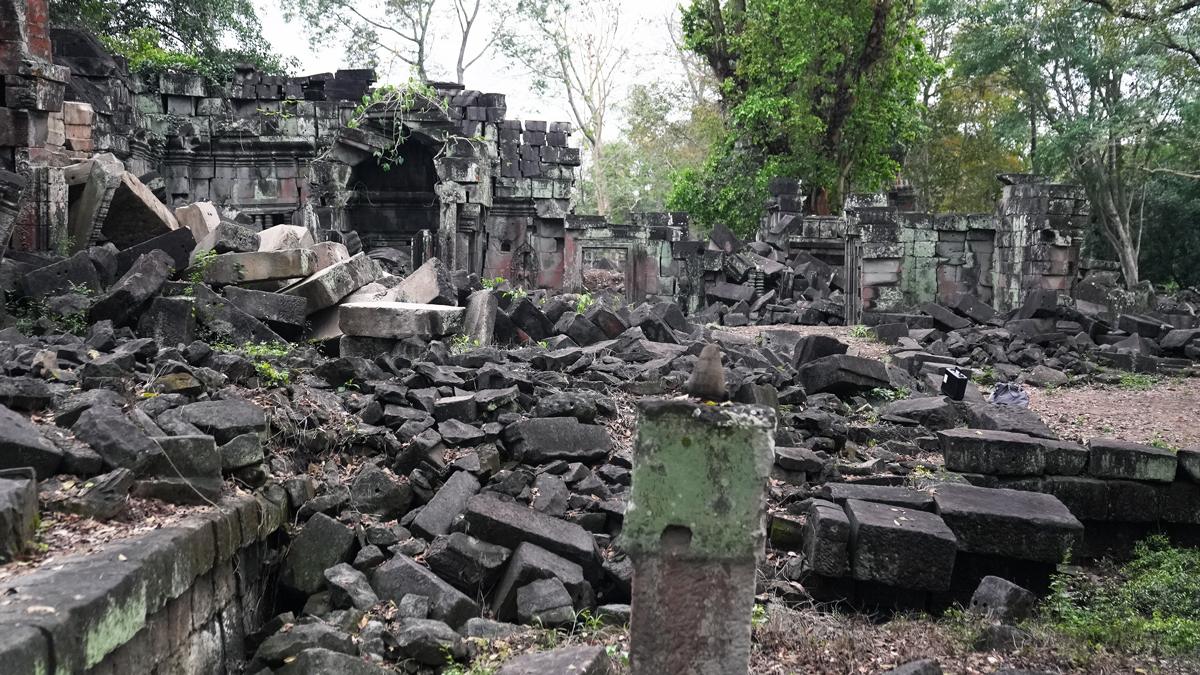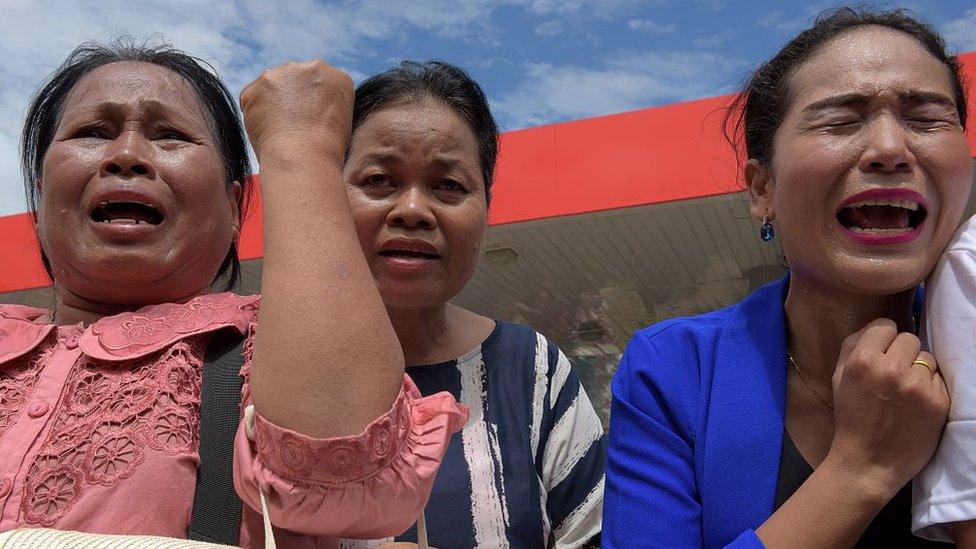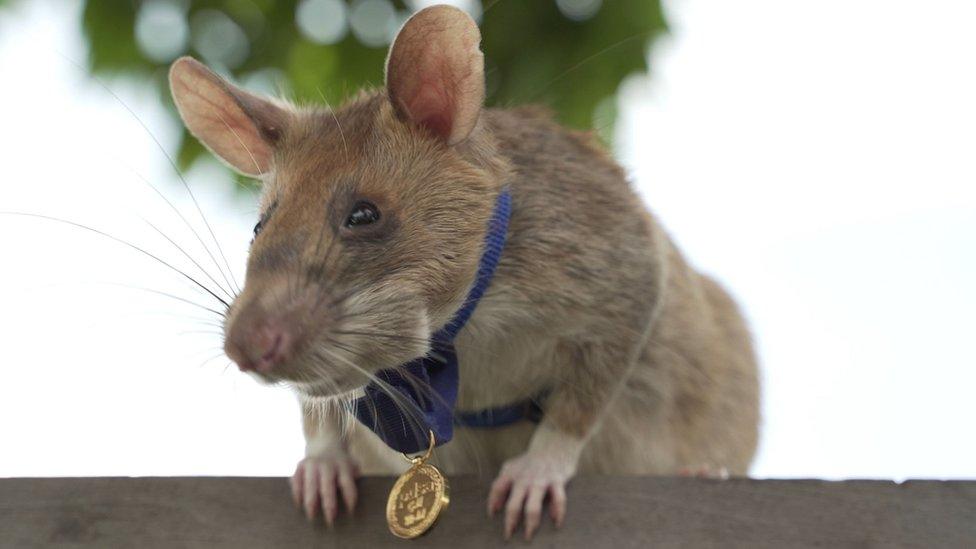Cambodian team hunting looted treasures visits UK museums
- Published

This Tenth Century Shiva and Skanda statue was recently returned to Phnom Penh from Douglas Latchford's collection
Two major British museums are opening up their collections to archaeologists and officials from Cambodia, in response to allegations that valuable items are sitting illegally in the UK.
The first visit is to the Victoria & Albert Museum on Friday, followed by one to the British Museum in October.
Cambodia wants the UK to help recover antiquities it says were stolen from its temples during years of conflict.
Both museums have said they are transparent about the origin of items.
The Cambodian delegation hopes to discuss the provenance of objects in the two collections and to examine them in person.
"The challenge for us is that we have been doing our research from long distance, just looking at what is publicly available on the museums' websites," says Brad Gordon, the head of Cambodia's investigations team. "For example, we are not able to see the objects from different angles."
In a statement, the V&A told the BBC that it welcomed the chance to engage in constructive dialogue with the Cambodian government, adding it was interested to see any information that sheds new light on the objects in its care.
The Cambodian team has also been invited to carry out a formal visit to the British Museum.
The Cambodians believe that the British Museum, the UK's largest, could have dozens of items in storage that were taken out of their country without permission and then acquired by the museum, as late as the early 1990s.

Many temples - such as Preah Khan Kampang Svay in central Cambodia - were left in ruins after decades of looting
Earlier this year, Cambodian culture minister Phoeurng Sackona appealed to the UK government for help. She said many important cultural treasures had been stolen from sacred temples and "wrongfully ended up" in warehouses and institutions - including the two London museums.
The Cambodians believe ancient statues hold the souls of their ancestors. By speaking to former looters and tracing shipping and sales records, they've determined that many of the stolen works passed through the hands of a rogue British art dealer, Douglas Latchford, who died in 2020.

Before the looting - archive photos of the Koh Ker archaeological site

The group has a priority list of items they're interested in discussing with each museum. The British Museum is believed to have approximately 100 Cambodian pieces, though all appear to be in storage.
The V&A is thought to have more than 50 items; a fraction of them on display. Seeing the pieces will be an emotional experience for some of the Cambodians, who have never seen such valuable objects up close before.
"I can't wait to see what the museums are keeping," says Soklida Tek, a young researcher with the Cambodian delegation. "I want to understand why the museums are hiding our ancestors, removed from their homes."
The focus on the UK marks the latest phase in the Cambodians' campaign to recover the country's most precious carvings and statues that were pillaged and then sold on to Western museums and private collectors.
Much of the looting took place over a three-decade period of civil war and strife. The murderous Khmer Rouge regime held power from 1975 to 1979, when it is thought to have killed more than two million of its own people, and the group controlled large portions of Cambodia until the late 1990s.
The Cambodian team has marked some successes in other countries recently, with significant returns of statues from the United States.
In August, 30 artefacts that are now known to have been trafficked by Douglas Latchford into the US were sent back to Cambodia.


At a ceremony to celebrate the return, Cambodia's US ambassador, Keo Chhea, said the experience was "like returning the souls of our culture back to our peoples".
Both London museums have long said they are transparent about the origins of the items in their collections.
"A successful outcome would be the development of a better understanding by all of the nature of the Khmer collections at the V&A," explains London-based Cambodian antiquities expert, Ashley Thompson, who is a member of the visiting delegation and a professor at the School of Oriental and African Studies in London.
She says the V&A has already invited the team to view the objects in their collection, both the ones on display and in storage, and also to exchange information on the backgrounds of those objects.
Ultimately, she's also hoping for "an agreement on collaboration moving forward to ensure the return of any materials which are shown to be illegally held at the V&A and requested by the Cambodian government".
Related topics
- Published12 May 2022

- Published10 July 2021

- Published9 April 2022

- Published11 January 2022
